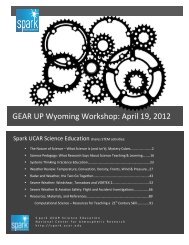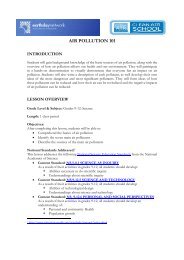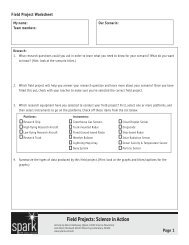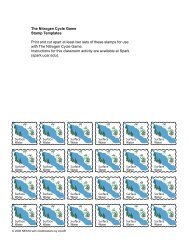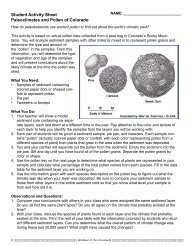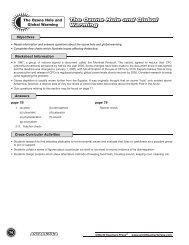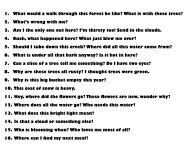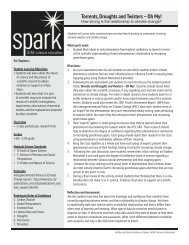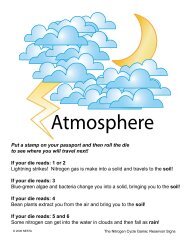Earth's Global Electric Circuit - Spark - University Corporation for ...
Earth's Global Electric Circuit - Spark - University Corporation for ...
Earth's Global Electric Circuit - Spark - University Corporation for ...
Create successful ePaper yourself
Turn your PDF publications into a flip-book with our unique Google optimized e-Paper software.
Transient<br />
Luminous<br />
Events<br />
G E C V i d e o<br />
Electrified<br />
Clouds<br />
Earth’s<br />
Atmosphere<br />
Earth’s<br />
Magnetosphere<br />
This Booklet and the video that it complements introduce students to a natural system in Earth’s<br />
atmosphere commonly referred to as the <strong>Global</strong> <strong>Electric</strong> <strong>Circuit</strong>. The circuit encompasses the various<br />
phenomena in our atmosphere that influence the many pathways of electricity that flow between Earth<br />
and the atmosphere’s ionosphere: lightning, electrified clouds, cosmic rays, ions, magnetic fields, radon<br />
emanating from beneath Earth’s surface.... These phenomena and more encompass a complex system of<br />
electrical circuits that scientists are just beginning to understand.<br />
The goal of scientific researchers working to advance our basic understanding of the <strong>Global</strong> <strong>Electric</strong><br />
<strong>Circuit</strong> is to develop a model that captures the system’s complexity and immense variability across space<br />
and time. This will allow scientists worldwide to study the system and better understand connections<br />
between Earth’s atmospheric electricity and other components of the Earth system.<br />
Next Generation Science Standards Addressed<br />
Ionosphere<br />
Sun<br />
Thunderstorms<br />
Next Generation Science Standards: Earth Science*<br />
ESS1.B Earth and the solar system<br />
ESS2.A Earth materials and systems<br />
ESS2.D Weather and climate<br />
ESS3.B Natural hazards<br />
ESS3.C Human impacts on Earth systems<br />
Next Generation Science Standards: Physical Science<br />
PS1.A Structure of matter<br />
PS1.B Chemical reactions<br />
PS2.A Forces and motion<br />
PS2.B Types of interactions<br />
PS2.C Stability & instability in physical systems<br />
PS3.A Definitions of energy<br />
PS3.B Conservation of energy and energy transfer<br />
Teacher’s Guide<br />
Next Generation Science Standards: Life Science<br />
LS2.B Cycles of matter and energy transfer in ecosystems<br />
* These standards come from the Next Generation Science Standards – second draft, January 2013<br />
2<br />
3.





